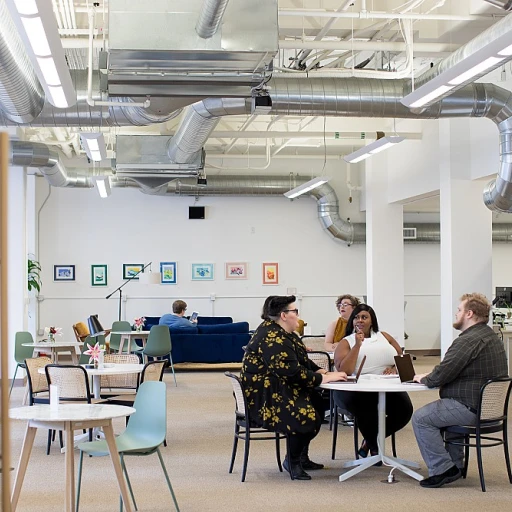
Understanding Conference Room Needs
{\"result\": \"
Assessing the Conference Room Environment
When choosing the ideal television for your meeting space, it's essential to consider the environment in which the TV will be integrated. Every conference room is unique, so understanding its specific requirements is the first step in ensuring you select the right screen. Here are some aspects to keep in mind:
- Room Size and Layout: The dimensions of your conference room will dictate the screen size needed for optimal viewing. Large rooms with ample seating arrangements require larger TV screens to ensure everyone has a clear view. In contrast, smaller spaces benefit from more compact models.
- Purpose and Functionality: Determine the primary use of the TV in your conference room. Will it serve mainly for presentations and video conferencing, or is there a need for high-quality motion picture displays for client meetings? Understanding this will help you narrow down your choices to TVs equipped with features like UHD smart display or QLED quantum technology, which enhance both static and moving images.
- Lighting Conditions: Ambient light can significantly affect the viewing experience in meeting rooms. Natural and artificial lighting conditions must be assessed to choose the right TV type, such as LED backlight or direct LED screens, which can help combat glare and maintain image quality.
- Integration and Connectivity Needs: Consider other technological tools in the conference room, like \"Microsoft Teams\" integration or \"digital signage\" capabilities. Modern TVs often come with multiple connectivity options that accommodate various peripheral devices and smart functionalities that enhance collaborative environments.
For more insights on creating an effective meeting space, check our article on \"Understanding the Role of Turnstiles in UK Companies\" which provides guidance on how various elements influence the dynamics and security of corporate environments.
\
}
Key Features to Look for in a TV
Essential Television Attributes for Optimal Conference Room Use
When selecting the most effective television for a conference room, it's crucial to focus on specific features that can elevate the meeting experience. Here are some important attributes to consider:- Screen Size and Resolution: The size of the screen must correlate with the room's dimensions. Larger rooms benefit from a bigger screen to ensure everyone enjoys a clear view. A UHD smart TV offers superior picture quality with its high resolution, ideal for displaying detailed presentations or video conferencing.
- Display Technology: Consider opting for technologies like LED backlight or even the advanced QLED quantum technology. These displays offer vibrant colors and increased brightness, improving the overall viewing experience even in well-lit meeting rooms.
- Motion Rate: A higher motion rate ensures fluid visuals, which can be beneficial during video conferencing or media-rich presentations. It reduces blur during fast-moving sequences, which maintains visual clarity.
- Smart Features: Integrating smart features like casting and streaming capabilities can enhance the flexibility of the screen in meetings. Screen TVs with smart fire or class smart options can integrate seamlessly with tools such as Microsoft Teams.
- Installation Versatility: Choose flat screen tvs that can be mounted or placed on furniture to adapt to the room configuration. Direct LED models can be particularly beneficial for adaptable positioning.
- Quality and Durability: Reviews and feedback can guide the decision on choosing a model from a reliable series known for its class and endurance. This assures long-term use and less maintenance.
Comparing TV Technologies
Weighing TV Technologies for Optimal Viewing
When choosing a television for a conference room, understanding the different TV technologies is crucial for ensuring the best meeting experience. From LED to QLED quantum, there are numerous options available that can significantly impact the quality of the display and video conferencing capabilities. First, let's consider LED screen TVs. These are popular for their affordability and are well-suited for rooms where the budget is a primary concern. Direct LED provides good brightness and contrast, making it a reliable choice for most meeting room settings. For those prioritizing vibrant colors and deeper blacks, the Neo QLED and QLED quantum series are excellent options. Their advanced technology enhances picture quality, providing a more immersive viewing experience which can be especially beneficial for presentations and video conferencing. With a higher motion rate, these TVs offer smooth transitions during fast-moving video presentations. Another critical factor is the resolution. UHD smart TVs offer superior picture clarity with four times the resolution of a full HD display. This is ideal for conference rooms that aim to deliver high-quality visuals. Furthermore, the integration of UHD signage ensures that digital signage content is displayed accurately, enhancing class smart meetings. Smart TV capabilities have also become increasingly important in the office environment. With built-in functionalities for applications like Microsoft Teams, flat screens equipped with smart fire technology can streamline operations, allowing for seamless connectivity during meetings. Reviewing and comparing different smart TV options helps in selecting the best fit for your room. Each TV technology class has its benefits and drawbacks, so it's essential to compare these options based on your specific room needs and conference requirements. For more detailed information on understanding these needs, explore the role of key logistical factors in the decision-making process.Budget Considerations
Financial Factors in TV Selection
When choosing a television for your conference room, it's essential to factor in your budget without compromising on the quality. Consider high-quality TVs that meet both your display and feature requirements while being economically viable.
Opt for models that balance price with performance, like LED or QLED quantum TVs, which offer excellent display capabilities at varied price points. UHD signage is another cost-effective option, especially for large rooms where superior resolution enhances video conferencing and meeting experiences. Don’t overlook reviews, as these can provide insights on the best choices within your budget class.
It's also important to consider future-proofing your investment. Evalute smart TVs that integrate well with technology apps like Microsoft Teams for seamless meetings and series presentations. Remember that screen size significantly impacts cost, so consider the room’s dimensions and viewing distance to select a suitable flat screen size that provides the best viewing experience for your audience.
Lastly, keep an eye on additional costs such as professional installation, which ensures optimum setup, and any necessary wall brackets or stands for smart fire or direct LED models. Regular maintenance and potential upgrades should also be factored into your budget to guarantee the long-term viability of your investment.
Installation and Setup Tips
Optimizing Installation and Setup for Your Screen TVs
Selecting the best screen for your conference rooms is just the first step toward enhancing your meetings and video conferencing experience. Setting up the TV correctly is equally important to maximize its potential. Let's explore some key aspects of this process:- Screen Size and Placement: Determining the appropriate screen size for your meeting room is essential to ensure that all attendees have a clear view, no matter their seating position. Make sure the TV placement minimizes glare and promotes optimal viewing angles.
- Cabling and Connections: With conference rooms often hosting multiple devices, ensuring the right connections is crucial. High-quality HDMI cables or digital signage solutions might be necessary, depending on your setup. This is particularly significant when integrating with systems like Microsoft Teams for seamless connectivity.
- Wall Mounting vs. Stand: Decide whether a wall mount or a stand is more suitable. Wall mounting can save space and offer a cleaner look, while a stand may provide flexibility in repositioning the screen for different meeting styles.
- Network Integration: For smart TVs, integrating with the existing network can unlock additional features such as app accessibility or UHD signage capabilities. Ensure a strong and secure Wi-Fi connection to support the TV's smart functions.
- Audio and Visual Calibration: To harness the full potential of the high-quality display technologies like QLED quantum or Neo QLED, calibrating the visuals and audio is necessary. Adjust settings according to your display's class and technology to achieve the most immersive viewing experience.
Maintenance and Upkeep
Ensuring Longevity and Optimal Performance
Maintaining your conference room TV is crucial for ensuring it provides the best experience and lasts for its intended lifespan. Here are some essential tips to keep your display in optimal condition:- Regular Cleaning: Dust and grime can affect your flat screen's performance and viewing experience. Use a soft, dry cloth to gently wipe the LED backlight and other parts of the TV. Avoid using harsh chemicals as they can damage the screen.
- Software Updates: Modern smart TVs frequently receive updates to enhance functionality and security. Ensure your TV is always running on the latest firmware to make the most of features like UHD smart capabilities and other high class technology integrations, such as Microsoft Teams and video conferencing tools.
- Environmental Conditions: Ensure that the meeting room maintains a stable temperature and humidity level. Excessive heat or moisture can damage electronics, leading to reduced performance and lifespan.
- Check Connections: Routinely check connections to ensure all cables are properly secured and there are no signs of wear and tear. This includes HDMI ports and any additional digital signage connections you might have set up in the conference rooms.
- Display Settings: Regularly review your TV's display settings to ensure optimal quality. Adjusting settings such as brightness, contrast, and the motion rate can significantly impact the viewing experience and prolong the life of the screen TV.
- Professional Reviews: Some issues might not be visible immediately. Scheduling routine professional reviews of your TV's performance can help identify and rectify potential problems early.


-large-teaser.webp)










